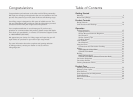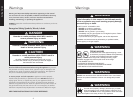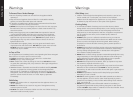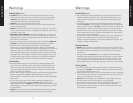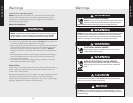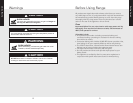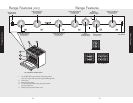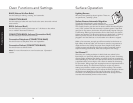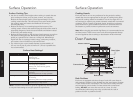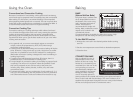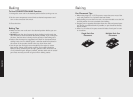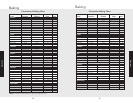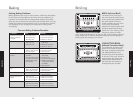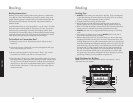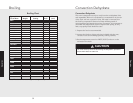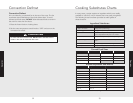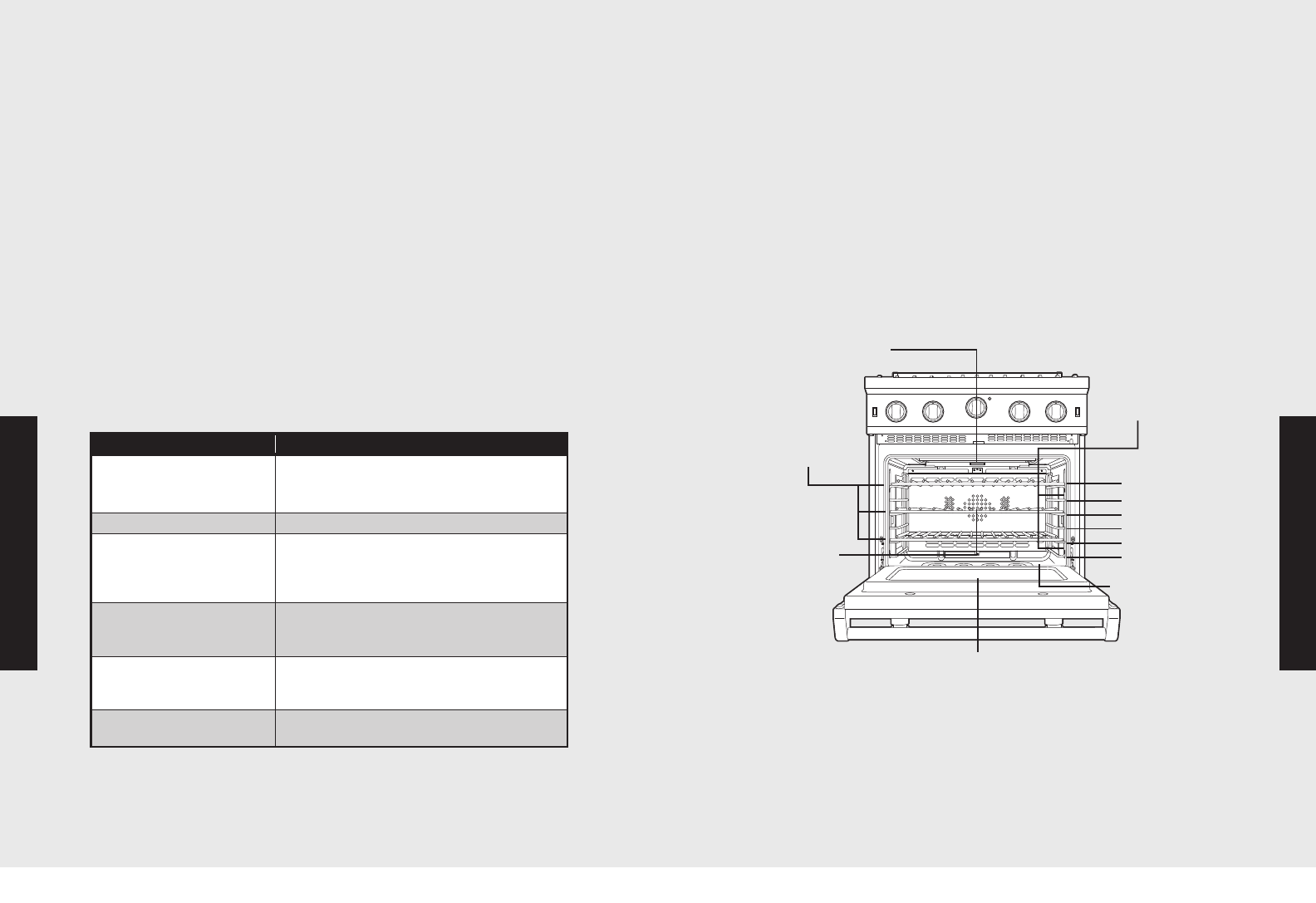
19
Operation
18
Surface Cooking Tips
• Use low or medium flame heights when cooking in vessels that are
poor conductors of heat, such as glass, ceramic, and cast-iron.
Reduce the flame height until it covers approximately 1/3 of the
cooking vessel diameter. This will ensure more even heating within
the cooking vessel and reduce the likelihood of burning or
scorching the food.
• Reduce the flame if it is extending beyond the bottom of the
cooking vessel. A flame that extends along the sides of the vessel is
potentially dangerous, heats the utensil handle and kitchen instead
of the food, and wastes energy.
• Reduce the flame height to the minimum level necessary to perform
the desired cooking process. Remember that food cooks just as
quickly at a gentle boil as it does at a rolling boil. Maintaining a
higher boil than is necessary wastes energy, cooks away moisture,
and causes a loss in food flavor and nutrient level.
• The minimum pot or pan (vessel) diameter recommended is 6”
(15 cm). Use of pots or pans as small as 4” (10 cm) is possible but
not recommended.
Surface Heat Settings*
*Note: The above information is given as a guide only. You may need
to vary the heat settings to suit your personal requirements.
Heat Setting Use
Simmer
Melting small quantities
Steaming rice
Simmering sauces
Low
Melting large quantities
Med Low
Low-temperature frying (eggs, etc.)
Simmering large quantities
Heating milk, cream sauces, gravies,
and puddings
Med
Sauteing and browning, braising, and
pan-frying
Maintaining slow boil on large quantities
Med High
High-temperature frying
Pan broiling
Maintaining fast boil on large quantities
High
Boiling water quickly
Deep-fat frying in large utensil
Surface Operation
Operation
Surface Operation
Removable bottom
Broiler element
Convection fan
Oven racks (3)
Oven lights
Bake burner
6
5
4
3
2
1
Rack Positions
Each oven is equipped with three tilt-proof racks. All ovens have six
rack positions. Position 6 is the farthest from the oven bottom. Position
1 is the closest to the oven bottom. The racks can be easily removed
and arranged at various levels. For best results with conventional
baking, DO NOT use more than one rack at a time. It is also
recommended, when using two racks, to bake with the racks in
positions 2 and 4 or positions 3 and 5.
Oven Features
Cooking Vessels
Each cook has his or her own preference for the particular cooking
vessels that are most appropriate for the type of cooking being done.
Any and all cooking vessels are suitable for use in the range and it is
not necessary to replace your present domestic vessels with commercial
cookware. This is a matter of personal choice. As with any cookware,
yours should be in good condition and free from excessive dents on
the bottom to provide maximum performance and convenience.
Note: When using big pots and/or high flames, it is recommended to use
the front burners. There is more room in the front and potential cleanup
at rear of appliance due to staining or discoloration will be minimized.



